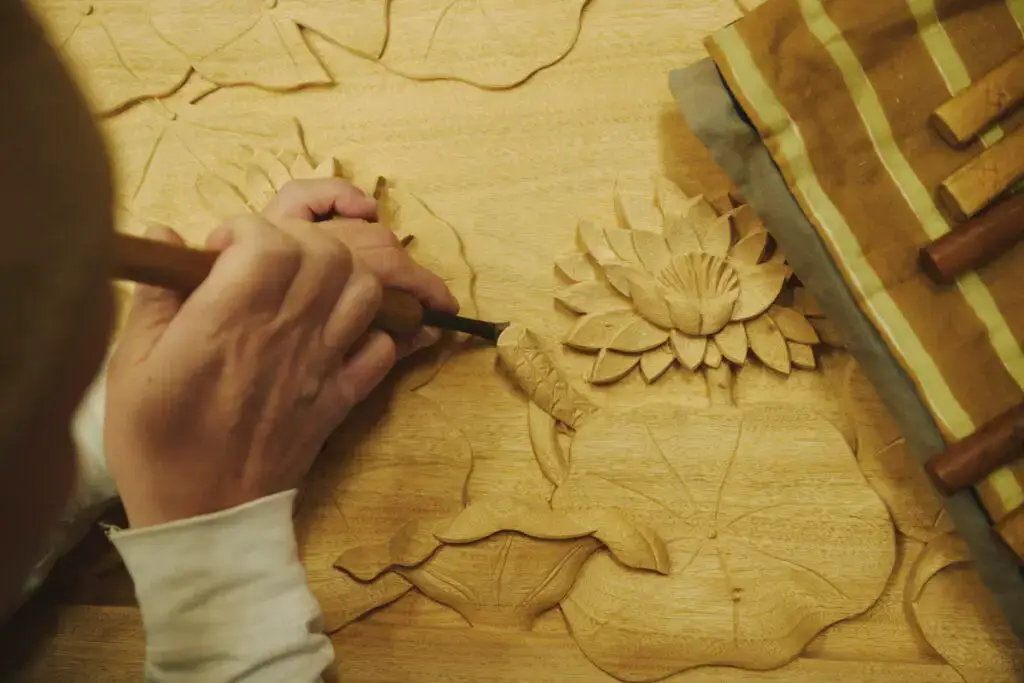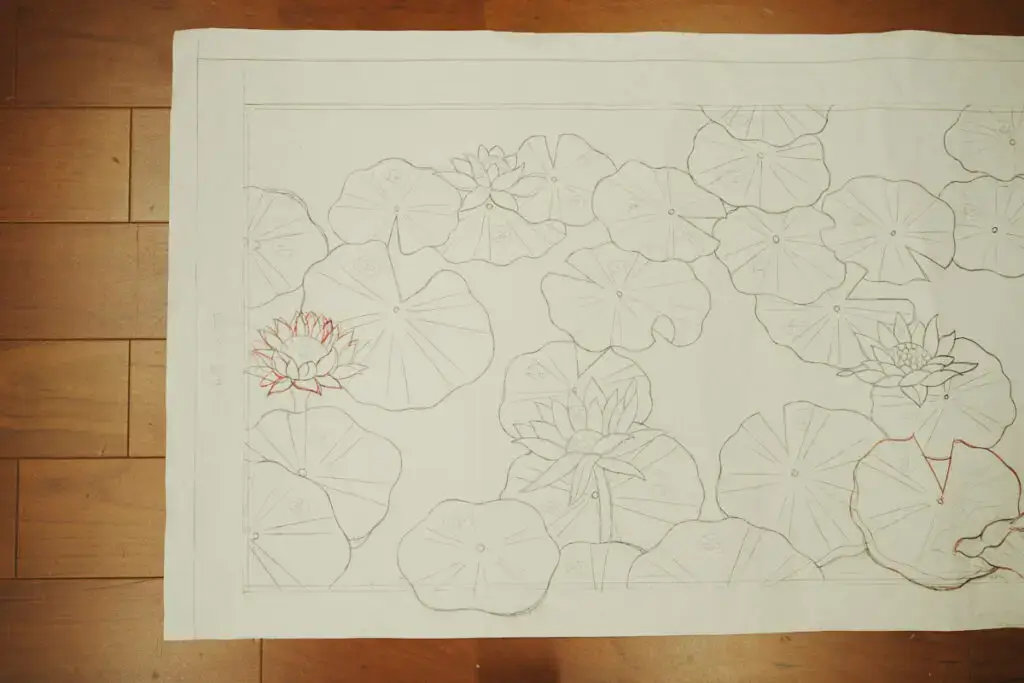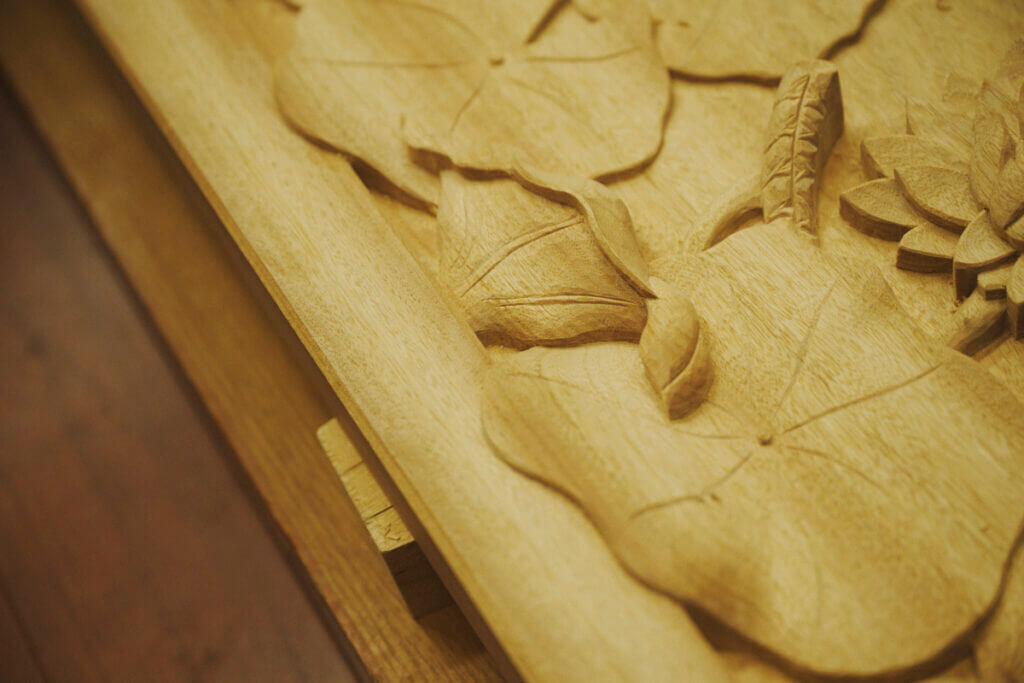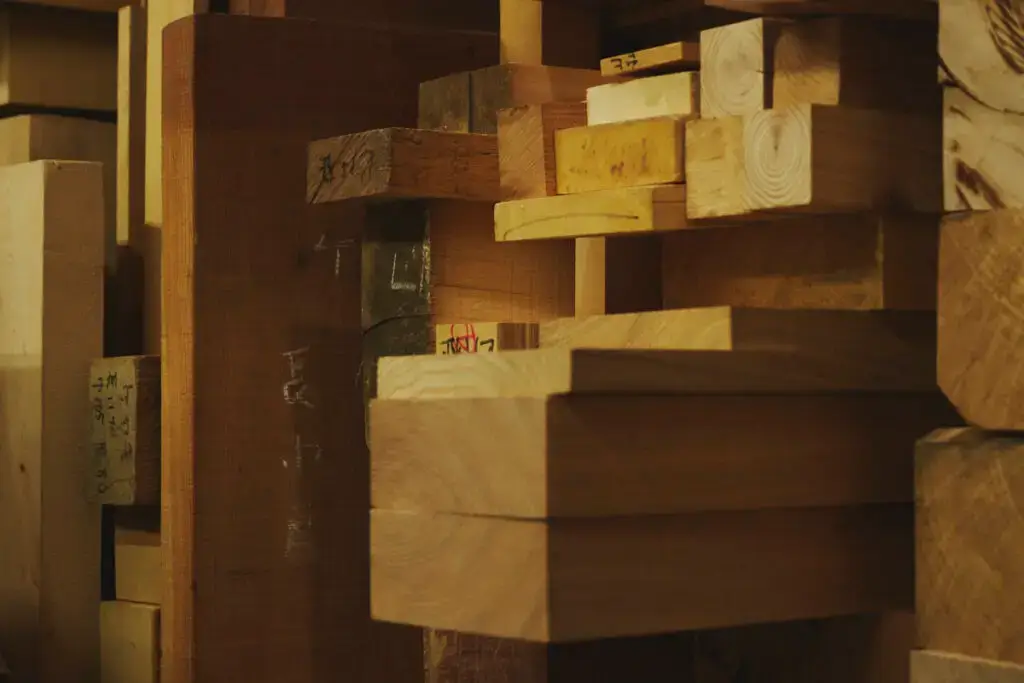Sosyu


Woodcarving
“Carve out a story from the drawing”
“Woodcarving” means creating Buddhist statues and shrine decorations from wood by hand. From design to carving, every step of the process is completed by hand.
Each item is a one-of-a-kind piece.

About Woodcarving
“Woodcarving” means creating Buddhist statues and shrine decorations from wood by hand. This woodcarving that I am working on is a custom order transom for my client. The
location where this window transom will be installed used to be a water lily field. After discussing the design, the customer requested that we carve a water lily motif. This is how I started designing the water lilies for the carving. I discuss the design with my customer many times before I finalize the design drawing. It is very important that my customer is satisfied with the design before carving. A trusting relationship with the customer is very important.
*Ranma Transom: A type of fixture found in Japanese architectural styles. It is installed between the ceiling and the Kamoi (door head-jamb) for lighting, ventilation, and decoration.

Design
From design to carving, every step of the process is completed by hand. Each item is a one-of-a-kind piece.
This transom was designed from scratch. This Ranma transom was carved in unison with the frame, creating an interesting effect by “showing the frame.”
The design of the carving highlights the beauty within the frame. This Ranma transom is unique because the frame is a part of the design.
Thus, we can create an original design according to the customerʼs request.

Process
After finalizing the design, we pick the type of wood. Next is rough carving, then creating depth to the finish.
The carving method is to scrape the surface. When carving leaves and other natural objects with movement, I research and collect the resources to inspire me on how to carve.
To express this, it is not enough to carve things exactly as you actually see them; you carve with an awareness of the optical illusion created by the position and angle, so it appears to be floating on water.

Materials
We have wood my grandfather collected. They have amazing grain. Some of those wood is very valuable and hard to get these days. It is also important to buy wood from lumber dealers to keep good relationships.
We use various kinds of wood but certain kinds of wood work better than others based on the object to be carved. For example, if we carve a Buddha with a gentle expression, we use Japanese cypress because it has a lighter color and is good for showing a fair skin color. The Japanese zelkova has distinguished grain and it is good to use for carving a Buddha with an aggressive energy. Even if I carve it in the same way, the grain shows aggressiveness.

Relationship with Asakusa
Asakusa is a town full of craftsmen. Itʼs a very interesting place to live. Not only craftsmen but also traditional storytellers live nearby.
If I have any problems, my neighbor will guide me to whom I should talk. For most problems I will find the solution within Asakusa. I feel very fortunate to be a carving master in Asakusa. I am very thankful to my parents and ancestors.

Our values
YOKOYA Akinori
I don’t believe I have anything on my own. I copied and learned not only from my parents but also from old craftsmen. My value grows in how I get closer to them. I learned from many of them and I feel gifted from them in my techniques.
At my shop, I have many old resource materials that reflect my grandfather, my parents, and many other craftsmen. I am very thankful for that. Itʼs important to continue with these techniques and knowledge. When any of my colleagues want to see the resources, I am always more than happy to show them.
